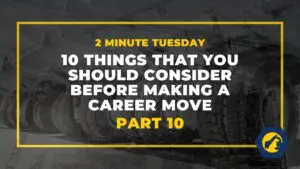
Estimators are the front-end revenue generators for the hard bid construction industry. Without “winning” the work there are no opportunities to make a profit. In my nearly 15 years of recruiting in the heavy civil construction sector, estimators are by far the most highly sought-after position as well as the most difficult to fill. It is not uncommon for me to hear of companies going over a year trying to hire a key team member for their estimating department.
Being such a difficult position to fill, my client’s generally do not have a plan to attract these top performing estimators to their company. Sole utilization of online marketing and competitive salaries have lost their effectiveness for filling these crucial positions.
In this article we discuss an executable plan to identify, attract, and successfully onboard estimating candidates. We will be covering these key points:
1. Creating, Defining, and Promoting Your Culture
2. Understanding and Communicating the Business Plan
3. Research and Implementing Programs within the Estimating Department
4. Creating a Marketing Campaign for Passive Candidates/Online Marketing
5. Proactive Outreach to Passive Candidates
6. Candidate Engagement
7. Making a Compelling Offer
8. Maintaining Strong Communication During Onboarding
1. Creating, Defining, and Promoting your Culture

Prior to executing a search for a candidate, it is important to make sure that your company culture is defined and marketable. Not only is this important to the marketing and interview process, but it will help define the company internally for the future.
All companies have a culture. Some of them have made an attempt to define and market their culture online, but few teach or proactively promote culture by definition or goals of the company.
Create and foster your company culture and be able to explain it:
I ask officers in companies to explain their company culture to me often. Many times I get a very canned response that has me guessing what that even means. Mostly that response is “we are a family-oriented company”.
But what does that really mean. How is it present in your company?
Does that mean that you consider your employees family? If so, what does that look like?
Does it mean that the company recognizes that the employees’ families are important? If so, why is it important to promote healthy family dynamics from a company policy standpoint? I often wonder if that just means that the company has a summer picnic and a winter holiday party that families are invited to.
Your company culture can be unique but not without intention and direction.
It is up to you and your executive team to create, define, and promote the culture from the top down. That also means that the culture needs to be defined and easily communicated.
It is important to have uniformity in communication of your company to help promote it. This “elevator pitch/speech” should be able to explain what about how the company’s policies promote this culture and why it is important to the company. Not only is this the key to successfully communicating your company culture to outsiders, but it is crucial in implementing and promoting the culture of the company from within. Make sure that anyone else that will be involved in the interview process can replicate it.
It is also important to understand that culture may shift or change based on the market or changes in the business plan. Reassessing, redefining and re-promoting your company culture as things shift is a good idea.
One of the best articles that I have read that expands on my advice here can be read here.
2. Understanding and Communicating the Business Plan

Equally important to establishing a company culture is to be able to understand and effectively communicate the business plan of the company. One would think this would come natural to every company, but it has been my experience that if hiring managers do not know what the business plan is for a 1, 3, 5, and 10-year outlook they rarely are able to communicate it effectively or relate how that may effect their specific department for growth and succession. This is not about sharing all of your trade secrets; it is about creating excitement about advancement for individuals within the department and communicating inspiring plans for defining the future of your company. A career pathway per say. This is key in candidate engagement.
3. Research and Implementing Programs within the Estimating Department
Implementing department specific programs can be done in every department of the company and should. In this article we are addressing the estimating department specifically as it relates to hard bid construction. The estimating department likely has more flexibility with programs than the operations/field side of the business for my hard-bid clients.
As we see a huge shift across all industries, including construction/contracting, employees are more desirous of a higher quality of life. Positioning your programs to address this can set you up for attracting top talent that is more demanding of a work/life balance. One of the most direct ways to help many of them reach this is through flexible working hours or even working remotely. Let’s take a closer look at these.
Flex Hours and working remotely:
These two things are seldom seen in the world of hard bid contracting. They often will not apply to field staff, but for some positions that may be based out of a corporate or regional office, flex hours and telecommuting can be a big draw for candidates; especially in an industry such as construction where it is so rare and almost unheard of.
Here are some statistics and research:
“A robust 68 percent of job seekers who are millennials said an option to work remotely would greatly increase their interest in specific employers, according to a survey by AfterCollege, a career network for college students and recent grads. “Policies that cultivate a flexible, fun, and casual work environment have a positive impact” on young people’s interest in specific employers, the survey found.” *
Working remotely has been on the rise.
“Just a few short years ago, working from home may have seemed out of reach across some industries. Today, not so much. In 2015, 23 percent of employees reported doing some of their work remotely, up from 19 percent in 2003, Bureau of Labor Statistics data shows. A New York Times report also noted that telecommuting is fast on the rise.” *
Being able to offer a variation of a flex hour schedule seems like a no-brainer. There are so many family dynamics at play these days with your employees’ schedules that it can really offer a much high standard of quality of life for your employees.
“According to the U.S. Bureau of Labor Statistics, more than 20 million Americans actively choose part-time work.
They’re not working fewer hours because they can’t find a full-time position; rather, they’re engaging in a deliberate, careful work-life balance. For most, working part-time is a result of simply not being able to commit to 9-to-5 jobs.
For example, they may be college or graduate students who need time to complete assignments. Some part-time employees juggle family obligations, and others are semi-retired.
However, one-third of this demographic – roughly 6 million Americans – choose part-time work so they can follow their passions. These workers want to design their own careers. Many are young and college-educated, and they want work that will cater to their lifestyle, which is largely in flux.” **
Offering more than a glass ceiling:
As we mentioned in step two (Understanding and Communicating the Business Plan), it is essential to create a personalized career pathway for the candidate based on the outlook for the department as it relates to your business plan. So many companies have no succession or professional growth plans for their employees or potential employees. Generally, the only candidates that are a viable option for them are ones that are either unemployed or fed up with their current employer and also have low or no drive for their own professional development.
A word that I associate with many candidates in this category is complacent. They do not have the drive to do more than what is expected of them. They are happy with the status quo.
They are not the candidates that will bring new ideas and drive the growth of your company.
The value of training and diversification:
It is important to effectively communicate the company’s plan and policies involving professional development to convey to potential candidates how much you value them.
We understand that smaller companies may not be able to compete in this category with some of the larger progressive companies in the industry, but that doesn’t mean it should be neglected.
- Offer to teach the candidate a different scope of project or work. They realize that this brings value to their overall career and that that means career growth if the pathway is open to them
- Offer training in-house or out-of-house for software or other technological trends in the industry.
- Offer pathways for Engineer in Training and Professional Engineer certifications.
- Offer tuition reimbursement for industry related degrees.
- Set up and monitor mentorship programs
- Promote employees’ activity in trade organizations related to your business
Make sure you are sharing with your potential candidates the programs or benefits in place to promote their professional growth. Advertise it on your website. Make sure it is discussed in the first interview. Implement it into your culture “pitch”.
Remember, it’s not just about making candidates feel important, it is about your employees feeling valued well past the interview process.
4. Creating a Marketing Campaign for Passive Candidates
Creating a marketing campaign for passive candidates is simply taking the work you have done in steps one through three and combining it in a palatable way to bring to the market.
Online marketing is not an effective tool to reach passive candidates. That being said, it is important and expected, especially when younger candidates have been exposed to a digital world from a very early age. They are used to aesthetically pleasing and functional websites that offer an option to engage and get an understanding of the culture, the projects, training and professional leadership development programs, and other important pillars that distinguish your organization from others.
5. Proactive Outreach to Passive Candidates
Who might catch more fish? The fisherman who puts some bait on the end of the hook and casts his rod out into the water and waits or the fisherman who hauls a commercial fishing net behind his boat.
In an industry where the average person works 50+ hours a week, there is not much time to research a better opportunity. It is even more difficult when so many companies are failing at distinguishing themselves and their professional opportunities online. Most passive candidates are not looking at LinkedIn job ads or other internet job boards for their next opportunity.
In my mind there is no better way to reach the passive candidate than by reaching out to them directly and personally. This can be accomplished through an internal recruiter or a talent acquisition partner like myself.
Moreover, reaching out to a person on the phone is arguably more effective than contact through Linkedin, similar job boards, or social media outlets. I have personally experienced that using Facebook to message candidates that I have no other ways of contacting (a last resort) rarely generates dialogue.
However, the effectiveness of this approach is solely dependent on having the necessary marketing information to get passive candidates to engage in the interview process. A good recruiter does not struggle in finding qualified candidates. It is a matter of getting those candidates engaged in the process. Here is where working with someone competent and qualified to deliver your marketing campaign is key. For more tips on finding the best talent acquisition partner click here.
6. Engaging a candidate:
Getting to know the candidate and having a strong understanding of their motivation, needs and desires is the first step in crafting a personalized opportunity and fit for the candidate. We created a survey that can be helpful in understanding and prioritizing these motivating factors (contact us for more information).
Having a candidate rank what is most important to them in their professional life will give you insight as to what you can offer to make an opportunity to come to work for you far better than their current company or other potential opportunities that they may be entertaining.
At some point including the candidates spouse/partner in the overall interview process can be critical to successful onboarding. Seldom are candidates with partners or families solely making employment decisions without the consult of their significant other.
This is important, especially in cases involving relocation where new employment can cause a disruption to a spouse or other family members.
Access to the Executive Management Team and Department Heads:
As a former employee for a company, there were two things that really annoyed me.
The first was limited access to the CEO. I saw the CEO about once a quarter and in a large group setting. The company at the time had approximately 150 employees and I could not understand why the CEO seemed inaccessible.
Secondly, when I voiced my desired career path in the company, it fell on deaf ears with a thank you for acknowledgment and not much more.
Neither bodes well for attracting the best candidates, onboarding or retaining talent. Even if the President or the COO is not usually involved in the routine interview process, getting the executive team members in front of candidates can make a huge impact on their decision on whether or not to join the organization.
If a C-level member is not available to make the face to face meeting because they are busy a short phone call to the candidate can go a long way.
7. Making a Compelling Offer

Candidates want to be wanted and nothing says the opposite as a lateral or deficient offer. I would go even so far to say that in this current market, candidates are expecting a 10%- 20% increase in compensation. Having an understanding of their expectations can certainly help guide you in creating an offer that will be accepted.
I find that it is always helpful to explain an offer to the candidate before it is extended, especially if their expectations cannot be met. Communicate how the company came to the number that is reflected on the offer. This insight to how the offer came about and why the parameters are in place can help the candidate understand why the offer might not be meeting their expectations. This approach may help you in swaying a candidate to come work for your company.
8. Maintaining Strong Communication During Onboarding
I can almost guarantee that a company will not let a good estimator tender a resignation without a plea to stay or address reasons that the employee is leaving. Get the candidate engaged with projects before they actually show up to the office can help. The more the candidate thinks of themselves as already an employee of your company, the less likely they may be to consider a counter offer. Maintain frequent contact with them until they are onboarded and ask how the resignation process is going. Ask directly about any concerns, issues, or second thoughts that they may have during the transition. This is naturally a stressful process. Remind them of what their current employer cannot offer them that the opportunity with your company affords to them. If you have identified their motivation during the interview process, remind them of their goals.
We actually coach candidates through the resignation process to help insure a smooth process.
In Conclusion
Setting your company apart from other companies does require your organization’s investment in time. Planning, execution, deliberateness, and documentation are keys to its success. Going through this process can help you refine and become even more proud of what you have created and it will help you capitalize on the best talent out in the market when competition for qualified individuals is high.
Proactive outreach to passive candidates is the only way to transmit your “opportunity” to a large number of qualified candidates giving you the highest percentage of filling the position with the best talent.
Check our other blogs or reach out to us for more helpful advice.
Taylor Maurer
Senior Managing Partner
Taylor Maurer runs the talent acquisition firm HCRC as senior managing partner. He is a professional heavy civil construction recruiter dedicated to attracting and retaining high quality talent such as chief estimators, field estimators, and many more positions.
* https://remote.co/10-stats-about-remote-work/
** https://www.inc.com/women-2/why-flexible-working-hours-actually-makes-employees-more-productive.html






